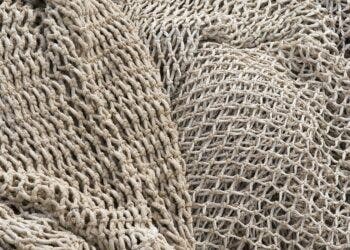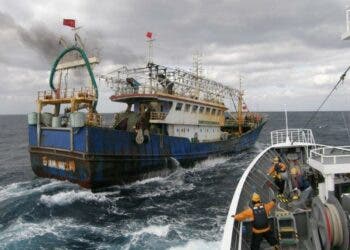
In 2006, the marine biologist Boris Worm published a paper projecting that, if current trends continued, the world’s fisheries would collapse by the middle of the century. Since then, the ocean has enjoyed a certain vogue among policymakers — the kind that comes with photos of handshakes and PowerPoints. Pledges have been made. Maps have been drawn. Lines have been etched across vast expanses of sea and labeled “marine protected areas” (MPAs).
The theory is straightforward. Ban fishing in certain places (or at least the worst kind, like trawling and dredging), and fish will bounce back. They will breed, swim, and eventually spill over the edges of those lines. Even the most hard-bitten of fishers might benefit. After all, if a fishery collapses, no one will catch anything anymore.
But like all things oceanic, enforcement is slippery. The sea, after all, is vast. Ships are relatively small, and tracking signals can be switched off.
So, the question that has dogged the marine conservation movement is this: are these protected areas anything more than aspirational cartography or “paper parks”, as they like to call them?
Two teams of researchers set out to tackle this question.
Real or Paper Parks
One study was led by the natural resource economist Jennifer Raynor. Raynor, who teaches at the University of Wisconsin–Madison, was not exactly a cheerleader for the system going in.
“There is a widespread scientific view that many MPAs are paper parks,” she told ZME Science. “Until now, nobody knew how often fishing bans were violated at a global scale.”
Raynor and her team set out to find out who was fishing where they shouldn’t be. Most vessels that fish legally are tracked using something called AIS, the automatic identification system. But the system is voluntary — and, perhaps unsurprisingly, those inclined to fish illegally often fail to volunteer.
To catch these “dark vessels,” the team turned to synthetic aperture radar, or SAR. This is a satellite technology that sends radar pulses toward Earth and interprets what bounces back, such as the shape of a ship. Unlike AIS, SAR doesn’t care whether a ship wants to be seen.
Between 2017 and 2021, Raynor’s group combed SAR imagery over nearly 8 million square kilometers of coastal waters. They focused on 1,380 MPAs that outright prohibit industrial fishing. These MPAs collectively sum only 2.1% of the global ocean by area, including Australia’s Great Barrier Reef and Hawaii’s Papahānaumokuākea Marine National Monument. These were not the loosely managed “multiple-use” zones that allow for crab pots and trawlers. The MPAs were, at least on paper, sanctuaries.
The results were, depending on one’s perspective, pretty encouraging. Very little fishing was happening inside these zones. On average, SAR detected just one vessel per 20,000 square kilometers — roughly the size of New Jersey. A quarter of the MPAs saw no vessels at all.
“MPAs with strict legal fishing bans work better than critics claim,” Raynor said.
In other words, in the places that really banned fishing — and meant it — those bans appear to have stuck.
The Ghost Fleet

Raynor’s findings landed at the same time as another, more disquieting, study by a separate team led by Raphael Seguin. Using the same satellite technology and global detection models, Seguin’s group surveyed more than 6,000 MPAs — this time including those with laxer rules, drawn from the International Union for Conservation of Nature’s sprawling category system.
The results told a very different story from Raynor’s. Nearly half of the MPAs examined showed signs of industrial fishing. In the most restrictive IUCN categories — the ones meant to bar all extractive activities — 80 percent of vessel detections came from untracked ships.
Seguin and his co-authors note that what an MPA claims to prohibit and what it actually stops are often different matters. Many MPAs exist more for show than for impact. Some are placed in areas that no one was fishing anyway.
“The real drivers of this apparent protection seem related to the MPA’s placement rather than the IUCN management category,” the authors write.
Translated from the language of academic understatement: a line on a map does not make a sanctuary.
Deterrence by Detection
Both studies, despite their differences, hinge on the same basic innovation: we can now see what’s happening on the water, whether ships want to be seen or not.
That’s a relatively recent development. AIS has been around for over a decade, but the wide-scale application of SAR to marine conservation is newer. SAR images are coarse and taken at specific times — usually early morning and evening. They won’t catch every ship, but they will catch enough to spot patterns.
Raynor and her team emphasize that even limited coverage can yield actionable intelligence. If you know where fishing is likely happening, you can target enforcement. For governments with limited budgets for such programs (and that’s most of them), that can be the difference between meaningful protection and symbolic gesture.
“Countries can predict the locations of illegal activities and target patrol efforts,” Raynor said. “This is critical for reaching the Global Biodiversity Framework’s 30 by 30 target.”
That target — protecting 30 percent of the ocean by 2030 — has become the flagship goal of international marine policy. It is ambitious. It has also resulted, in the words of Boris Worm, ‘in “paper parks” that are recognized as protected areas but do not prevent harmful activities.’
Worm, who commented on both studies in Science, writes that while the best-protected MPAs are indeed working, they are the exception. Most are not enforced. Many are not even implemented. And yet, where investment and enforcement do align, the results are tangible: fish populations recover, ecosystems rebound, and the temptation to fish illegally is diminished simply because the risk of getting caught goes up.
Paper Seas
In the end, the contrast between Raynor’s and Seguin’s findings may be more about semantics than science. Raynor looked only at places with clear, enforced rules. Seguin looked at all the places that call themselves “protected,” regardless of what that means on the water.
As Raynor put it:
“We already know that a lot of MPAs allow fishing. Governments claim that 8% of the ocean is ‘protected,’ even though almost two-thirds of this area allows industrial fishing.”
The lesson isn’t that marine protection is a sham. It’s that enforcement matters. Rules matter. Data matters. And, perhaps most crucially, maps don’t protect fish — people do.
The two studies both appeared in the journal Science (first and second).






